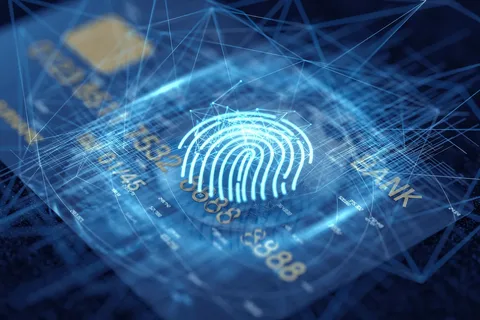Introduction
In the ever-evolving landscape of digital payments, biometric technology is paving the way for a more secure and convenient future. This article explores the transformative potential of biometric payments, focusing on the integration of fingerprints and facial recognition as the key drivers of innovation.
From PINs to Biometrics
Traditionally, personal identification numbers (PINs) have been the primary means of securing financial transactions. However, the rise of biometric technology has introduced a more sophisticated and secure method of authentication, relying on unique physiological or behavioral traits.
Biometric Data Security
Biometric data, such as fingerprints and facial features, offers a higher level of security compared to traditional authentication methods. The uniqueness and complexity of these biometric markers make it significantly more challenging for unauthorized access, reducing the risk of identity theft and fraudulent activities.
Secure Authentication
Fingerprints are unique to each individual, providing a highly secure method of authentication. Biometric payment systems that utilize fingerprints ensure that only authorized users can initiate transactions, adding an extra layer of security to digital payments.
Contactless Transactions
The integration of fingerprint biometrics in contactless payment systems allows for seamless and secure transactions. Users can simply place their finger on a sensor to authenticate and authorize payments, eliminating the need for physical cards or PINs.
Facial Recognition in Biometric Payments
Facial recognition technology enhances the convenience and speed of payments. Users can complete transactions by simply looking at a camera, providing a frictionless experience at payment terminals and online platforms.
Continuous Authentication
Facial recognition enables continuous authentication throughout a transaction. The technology can analyze facial features in real time, ensuring that the authorized user remains present throughout the payment process, enhancing security measures.
Enhanced Security
Biometric payments offer enhanced security by relying on unique physiological features, reducing the risk of unauthorized access and fraud.
User Convenience
The simplicity of biometric authentication, whether through fingerprints or facial recognition, enhances user convenience. It eliminates the need to remember passwords or carry physical cards, streamlining the payment process.
Privacy Concerns
The collection and storage of biometric data raise privacy concerns. Addressing these concerns requires robust data protection measures and transparent policies on how biometric information is handled.
Technical Challenges
Implementing biometric payment systems involves overcoming technical challenges, such as ensuring the accuracy and reliability of fingerprint and facial recognition technologies in various conditions.
Multi-Modal Biometrics
The future of biometric payments may involve the integration of multiple biometric modalities for enhanced security. Combining fingerprints with facial recognition or other biometric markers can create more robust authentication systems.
Blockchain Integration
Integrating biometric payments with blockchain technology enhances the security and transparency of transactions. Blockchain ensures the immutability of biometric data, reducing the risk of tampering or unauthorized access.
Conclusion
The future of biometric payments, propelled by fingerprints and facial recognition, promises a revolution in the way we conduct financial transactions. The combination of enhanced security, user convenience, and ongoing technological innovations positions biometric payments as a cornerstone of the digital payment landscape.
FAQs
How do fingerprints enhance biometric payments?
Fingerprints provide a highly secure method of authentication in biometric payments, ensuring that only authorized users can initiate transactions. The integration of fingerprints also enables secure and contactless transactions.
What is the role of facial recognition in biometric payments?
Facial recognition enhances the convenience and speed of payments by allowing users to complete transactions simply by looking at a camera. It provides continuous authentication throughout the payment process, contributing to enhanced security.
What advantages do biometric payments offer?
Biometric payments offer enhanced security by relying on unique physiological features. They also provide user convenience by eliminating the need to remember passwords or carry physical cards.

